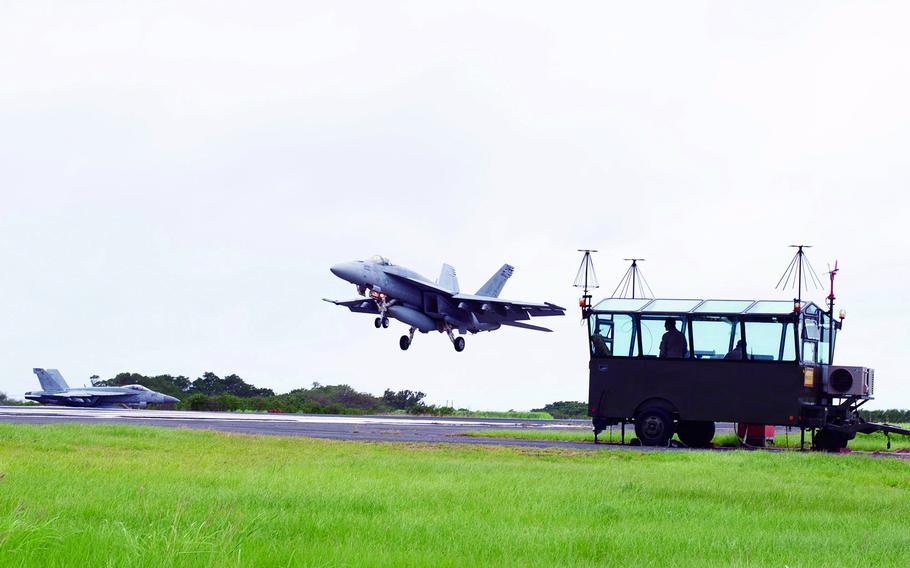
F/A-18s from Carrier Air Wing 5 at Marine Corps Air Station Iwakuni, Japan, take part in field carrier-landing practice at Iwo Jima, Japan, May 17, 2019. (Stars and Stripes)
YOKOSUKA NAVAL BASE, Japan — Navy aviators from Carrier Air Wing 5 are slated to fly to Iwo Jima on Tuesday for 10 days of carrier landing practice ahead of the USS Ronald Reagan’s summer deployment, Naval Forces Japan announced Monday.
Pilots and crew of fixed-wing aircraft based at Marine Corps Air Station Iwakuni, such as F/A-18 Super Hornets and EA-18 Growlers, must complete the required practice, or FCLP, before the aircraft carrier can get underway.
During their time on the island, senior pilots will fly at least six sorties — three during the day and three at night — and complete seven to eight touch-and-go landings. Junior pilots will undergo more extensive training and may complete 12 or more touch-and-goes per sortie.
The U.S. Navy has conducted carrier-landing training on Iwo Jima, also known as Iwo To, for Carrier Air Wing 5 since 1991, but it considers Iwo Jima unsuitable for the training due to difficulty in maintaining its remote facilities and a lack of alternate landing fields.
In the event of bad weather, pilots will relocate to other U.S. airfields in Japan, such as Yokota Air Base or Misawa Air Base, according to the announcement. However, local communities often object to the noise associated with flight operations, which Naval Forces Japan promised to minimize while “balancing our obligation to maintain operational readiness,” according to the announcement.
The Japanese Defense Ministry plans to develop a new site for U.S. carrier landing practice on Mageshima, an island 20 miles south of Kyushu, the southernmost of Japan’s four main islands. It was scheduled to complete an environmental impact assessment of the site in March before beginning construction of an installation expected to cost about $1.6 billion, according to public broadcaster NHK in November.
The Ronald Reagan has been at Yokosuka, homeport of the U.S. 7th Fleet, since Dec. 16, when it concluded its last deployment. Once the ship’s crew completes its remaining preparations, which often include one or two weeks of sea trials, the carrier will likely depart for this year’s patrol.
The patrols typically last around six months.